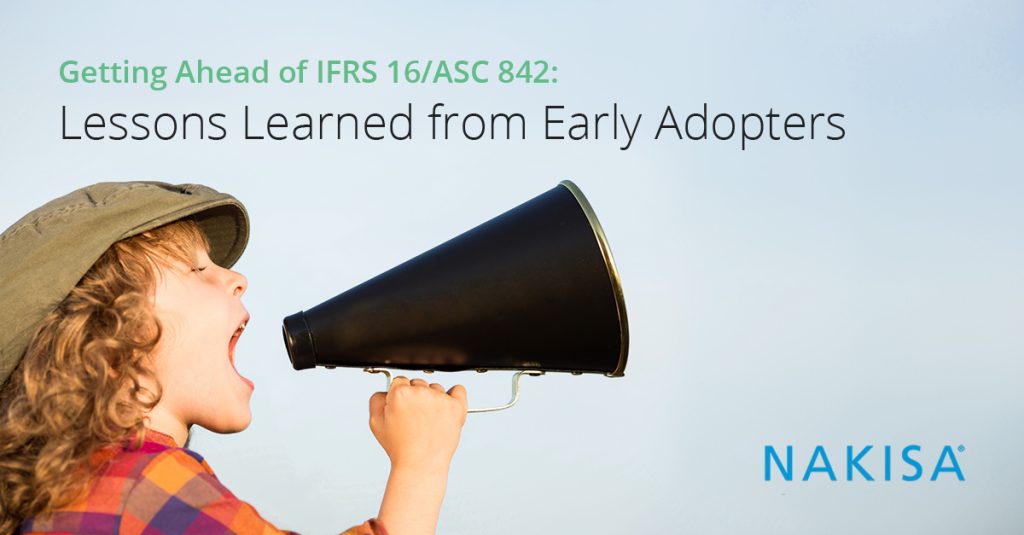While many companies are scrambling to meet the approaching January 2019 deadline to comply with the new IFRS 16 or ASC 842 lease accounting standards, not all are waiting until the last minute.
The early bird catches the worm, right?
Maybe. But, just because these organizations started early, doesn’t mean the process for adopting and implementing a new lease accounting strategy was any easier. These early adopters have important insights about what to do—and, more importantly, what not to do—when it comes to the compliance process.
We recently spoke with several teams from companies who have already completed the transition—including a Fortune 500 airline and a Fortune 100 food and beverage manufacturer. We wanted to find out more about their approach. Here are four key takeaways from their experiences:
- Start as early as possible.As prepared as you may think you are, the data collection, software selection, and migration processes will take longer than you think. On the data side, one client said they should have begun collecting data at least a full two months before beginning the process of migrating to a new lease accounting system. You should also ensure that every team that will be involved in the migration process is bought-in to your compliance strategy early-on in the process, so that no one is surprised when the process begins.
- Get data collection right the first time.There’s no getting around it: Data collection will be the longest and most pain-staking part of the compliance process. Leases can have hundreds of different variables—from rent types and amounts to payment frequency to buyout options. Gathering all these variables and ensuring accuracy isn’t easy. The potential for error—or the need to re-gather data—grows when you work with outdated leases or when you gather data that doesn’t comply with your lease accounting software.
- Enable your global teams to participate in compliance.Speaking of data--though, your organization probably has one central project team leading implementation and compliance, for large-scale organizations, lease information is often stored in filing cabinets in offices across the globe. These organizations will need data collection help from all their teams around the world. These teams need to be enabled to collect and share necessary data—in the proper format. Then, these teams will need to be properly trained in your new lease accounting software, as well as the processes for ensuring accuracy and compliance.
- Stand up a large support team.Several customers started their compliance projects with small support teams of two to three people—and quickly realized this was not enough. The compliance process requires the help of team members from across your organization—from finance to accounting to procurement to business ops and IT. All of these team members need to be trained in new systems and processes. Make sure your support team is equipped to support everyone involved in the compliance process before it begins.
As the January 2019 deadline approaches, it may be tempting to rush into decisions around compliance. But diving into the process without proper preparation and strategy could lead to delays and skyrocketing costs. Before you comply, make sure you’re prepared.







